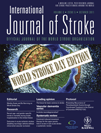Preventing recurrence of thromboembolic events through coordinated treatment in the District of Columbia
Conflict of interest: None declared.
Study organization and funding: This project was supported by Award Number U54NS057405 from the National Institute of Neurological Disorders and Stroke (NINDS) and National Institute on Minority Health and Health Disparities (NIMHD) (U54NS057405). The content is solely the responsibility of the authors and does not necessarily represent the official views of the National Institute of Neurological Disorders and Stroke or the National Institutes of Health.
Abstract
Rationale PROTECT DC examines whether stroke navigators can improve cardiovascular risk factors in urban underserved individuals newly hospitalized for stroke or ischemic attack. Within one-year of hospital discharge, up to one-third of patients no longer adhere to secondary prevention behaviors. Adherence rates are lower in minority-underserved groups, contributing to health disparities. In-hospital programs increase use of stroke prevention therapies but may not be as successful in underserved individuals. In these groups, low literacy, limited healthcare access, and sparse community resources may reduce adherence. Lay community health workers (navigators) improve adherence in other illnesses through education and assisting in overcoming barriers to achieving desired health behaviors and obtaining needed healthcare services.
Aims and design PROTECT DC is a Phase II, single-blind, randomized, controlled trial comparing in-hospital education plus stroke navigators to usual care. Atherogenic ischemic stroke and transient ischemic attack survivors are recruited from Washington, DC hospitals. Navigators meet with participants during the index hospitalization, perform home visits, and meet by phone. They focus on stroke education, medication compliance, and overcoming practical barriers to adherence. The interventions are driven by the theories of reasoned action and planned behavior.
Study outcomes The primary dependent measure is a summary score of four objective measures of stroke risk factor control: systolic blood pressure, low-density lipoprotein, hemoglobin Hb A1C, and antiplatelet agent pill counts. Secondary outcomes include stroke knowledge, exercise, dietary modification, and smoking cessation.
Conclusion PROTECT DC will determine whether a Phase III trial of stroke navigation for urban underserved individuals to improve adherence to secondary stroke prevention behaviors is warranted.




